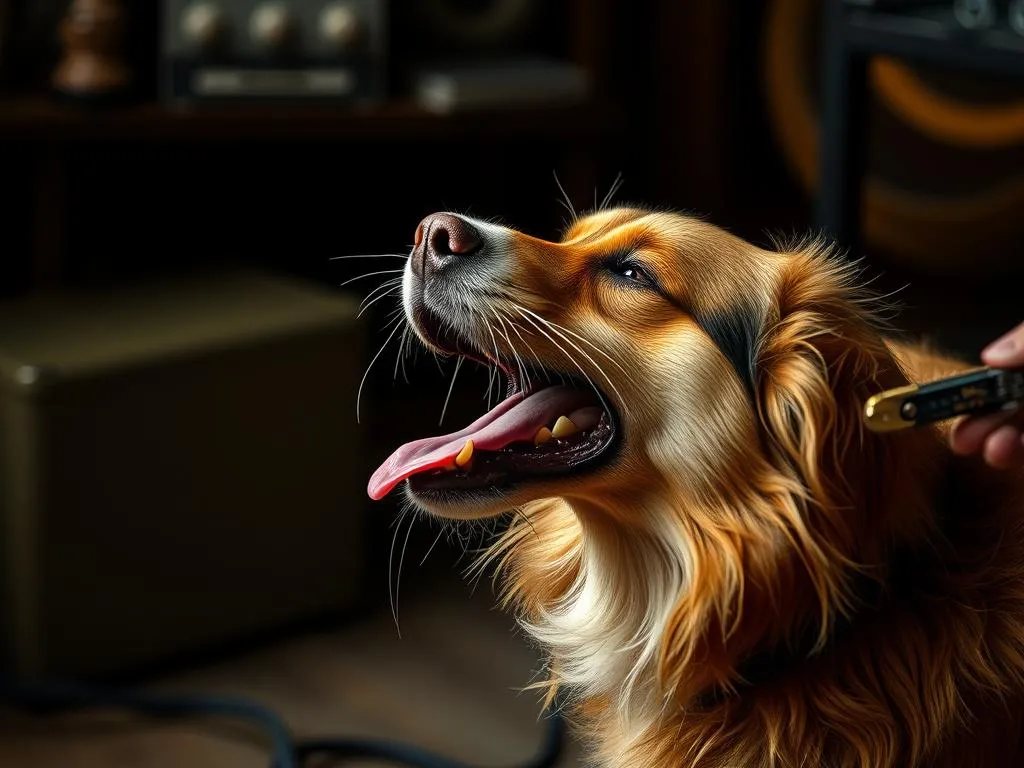
Introduction
Dogs are fascinating creatures, known for their unique ways of communicating. As pet owners, it’s essential to understand these behaviors not only to foster a better relationship with our furry friends but also to address any potential issues that may arise. One particularly intriguing behavior is howling, especially in response to music. Why do dogs howl at music? This question not only piques curiosity but also opens a window into the complex world of canine communication.
In this article, we will explore the reasons behind this behavior, delving into the nature of dog communication, instinctual traits, emotional responses, and environmental triggers, particularly emphasizing how music plays a role in eliciting howling. By the end, dog owners will gain valuable insights that can help enhance their understanding of their pets.
Understanding Dog Communication
The Basics of Canine Communication
Dogs communicate through various vocalizations, including barking, whining, growling, and howling. Each sound serves a distinct purpose, conveying different emotions or messages. For instance, barking might signal excitement or alertness, while whining often indicates anxiety or a desire for attention. Howling, however, is a more ancient form of communication, deeply rooted in the history of canine ancestry.
The Significance of Howling
Historically, howling has been a crucial aspect of communication among wolves, serving purposes such as locating pack members or signaling danger. Domestic dogs, having descended from these wild ancestors, retain this instinctual behavior. While the context may differ from their wild counterparts, howling remains an essential part of their communication toolkit.
Why Do Dogs Howl?
Instinctual Behaviors
Howling is an inherited trait from wild ancestors, providing insight into why many domestic dogs engage in this behavior. In the wild, howling serves functions like group cohesion and territory marking. While domestic dogs are less likely to need howling for survival, they still exhibit this instinct, often howling in response to certain stimuli.
Emotional Responses
Dogs express their emotions through howling, which can indicate feelings of loneliness, anxiety, or excitement. For instance, a dog left alone for an extended period may howl as a way to express their distress. Similarly, a dog may howl when they hear a siren, interpreting it as a call to join their pack. Recognizing these emotional cues is vital for dog owners to address their pet’s needs effectively.
Environmental Triggers
Certain sounds trigger howling, such as sirens, other animals’ vocalizations, and, notably, music. Many dogs respond to various stimuli, and the auditory landscape can significantly impact their behavior. Anecdotes abound of dogs howling along to their owners’ favorite songs, creating a bond through shared sound experiences.
The Connection Between Music and Howling
Dogs’ Sensitivity to Sound
Dogs possess remarkable hearing abilities, far superior to those of humans. They can detect a broader range of frequencies, allowing them to hear sounds that are inaudible to us. This heightened sensitivity means that certain pitches and tones in music can resonate with dogs, triggering their howling instinct.
Types of Music that Trigger Howling
Not all music elicits howling; certain genres or styles tend to be more appealing to dogs. For example, classical music, with its varied tempos and soothing melodies, often garners a favorable response. Conversely, louder, more chaotic genres like rock may provoke a different reaction. The connection between tempo, rhythm, and volume plays a pivotal role in how dogs respond to music, with each dog having unique preferences that owners should observe.
Research and Studies
Recent studies have begun to explore the relationship between dogs and music, shedding light on why certain sounds elicit howling. Veterinarians and animal behaviorists have noted that dogs may howl in response to music that mimics the frequency ranges of animal vocalizations. These insights provide a scientific basis for understanding why dogs howl at music, contributing to our overall knowledge of canine behavior.
Behavioral Implications of Howling at Music
Understanding Your Dog’s Behavior
Recognizing when howling is a concern is crucial for dog owners. Playful howling may signify excitement or engagement, while stress-related howling could indicate anxiety or discomfort. Observing the context in which howling occurs can help differentiate between these behaviors. For example, if your dog howls when you play a specific song, it might be a playful reaction rather than a sign of distress.
Training and Management Strategies
To manage excessive howling, owners can employ various techniques. Desensitization can help dogs become accustomed to specific sounds, reducing their instinct to howl. Positive reinforcement is also effective; rewarding calm behavior during music sessions can encourage dogs to remain quiet. Additionally, creating a soothing environment, such as playing softer music at lower volumes, can help mitigate howling tendencies.
Fun Facts about Dogs and Music
How Dogs Use Music
Interestingly, music can be a powerful tool for calming anxious dogs. Many pet owners report that playing classical music helps soothe their pets during stressful situations, like fireworks or thunderstorms. There are even playlists specifically designed for dogs, tapping into their unique auditory preferences.
Popular Myths and Misconceptions
Several myths surround the idea of dogs howling at music. One common misconception is that dogs howl solely in response to sadness or loneliness. In reality, howling can stem from various emotions and stimuli. Understanding these nuances is essential for dog owners, allowing them to respond appropriately to their pets’ needs.
Conclusion
In summary, understanding why dogs howl at music involves exploring a mix of instinctual behaviors, emotional responses, and environmental triggers. By recognizing these factors, dog owners can foster a deeper connection with their pets. Observing and interpreting your dog’s howling can lead to better communication, allowing for a more harmonious relationship.
As we continue to learn about canine behavior, we realize that our dogs are not just pets; they are complex beings with their unique ways of expressing themselves. Encouraging open lines of communication between dogs and humans is vital, allowing for a better understanding of their needs and desires.
This comprehensive exploration of dog behavior highlights the fascinating connection between dogs and music, shedding light on why our furry friends may howl in response. As we continue to engage with our dogs and observe their behaviors, we enhance the bond we share, paving the way for a fulfilling companionship.









